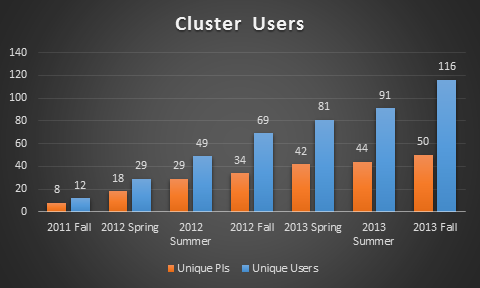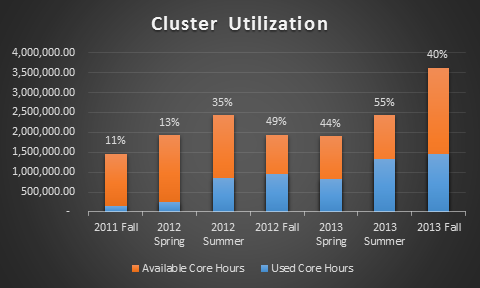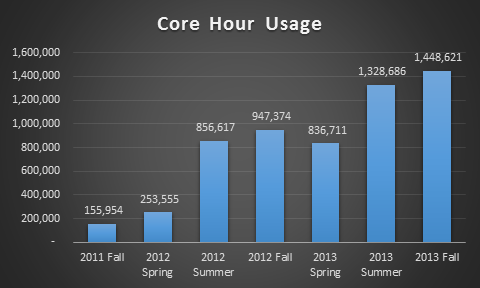Operational changes to the Storrs High Performance Computing (HPC) facility will be effective July 1. Continue reading
UConn Joins Hunt for New Materials
The University of Connecticut is one of several leading research institutions collaborating with the Toyota Research Institute to accelerate the design and discovery of advanced materials using artificial intelligence and machine learning. Continue reading
Storrs HPC Presentation at Computational Biology Core Open House
The Computational Biology Core held an Open House event on 2/24/2017 on the Farmington campus. The Storrs HPC facility was presented to the attendees during this event. Continue reading
UConn High Performance Computing with Dell EMC and Intel
UConn has partnered with Dell EMC and Intel to create a high performance computing cluster that students and faculty can use in their research. With this HPC Cluster, UConn researchers can solve problems that are computationally intensive or involve massive amounts of data in a matter of days or hours, instead of weeks.
The HPC cluster operated on the Storrs campus features 6,000 CPU cores, a high-speed fabric interconnect, and a parallel file system. Since 2011, it has been used by over 500 researchers, from each of the university’s schools and colleges, for over 40 million hours of scientific computation.
UConn Receives $117K Manufacturing Grant
The U.S. Commerce Department announced Monday a grant of nearly $117,000 to help the University of Connecticut advance its plans for a center for manufacturers to use computers to test and modify product designs and manufacturing processes.
UConn, the federal Economic Development Administration and Connecticut Innovations, the state’s venture capital fund, are spending $2.1 million over five years to establish the Connecticut Manufacturing Simulation Center. It will give small and medium-sized Connecticut manufacturers access to computer-based design, modeling and simulation to test and modify product designs and manufacturing processes before making a prototype.
Storrs HPC Cluster Usage Report
In 2011 the UConn School of Engineering, in collaboration with the Booth Engineering Center for Advanced Technology (BECAT), invested in the largest High Performance Computing (HPC) cluster on the Storrs campus. This cluster has received continual improvement in both operational efficiency and resources expansion. The cluster is serving as the catalyst for research in computationally intensive disciplines related to the university’s ambitious initiatives, including the UConn Technology Park, Next Generation Connecticut, and Bioscience Connecticut. Over the three years of the cluster’s operation, its usage has increased at a rapid pace. BECAT has published the following graphs which highlight the cluster’s usage during the Fall of 2011 through the Fall of 2013.



‘Digital Alchemist’ Uses Computer to Design New Materials
Serge Nakhmanson describes himself as a ‘digital alchemist.’ A former scientist with the Argonne National Laboratory, he specializes in the computer-based design and discovery of advanced multifunctional materials. Continue reading
HPC Center Keeps Researchers On Track
The processing and analysis of massive data as part of scientific problem solving require powerful high performance computing as well as enormous high speed storage and memory. Continue reading